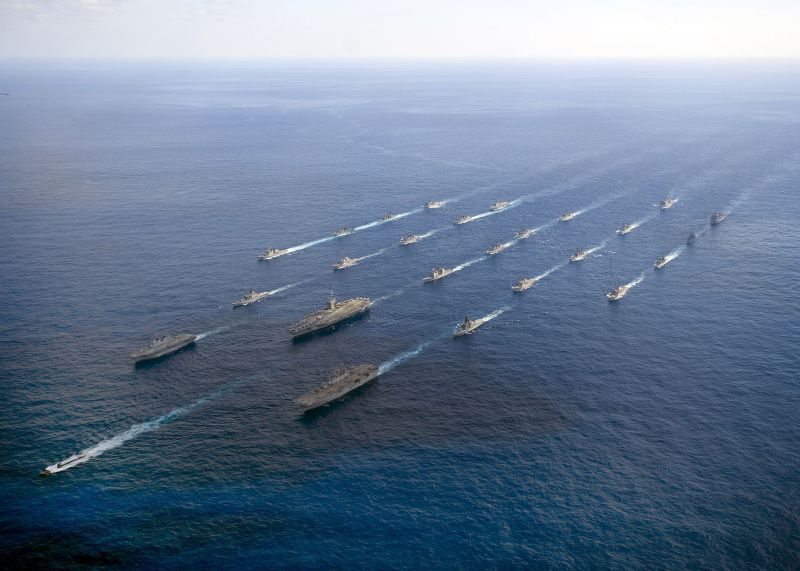Secretary of the Navy Ray Mabus today directed the office of the Deputy Under Secretary of the Navy/Deputy Chief Management Officer (DUSN/DCMO) to begin a comprehensive assessment of the business challenges facing the Navy and Marine Corps.
He also instructed the offices of the DUSN/DCMO to begin developing a plan to address the multiple budgetary and resource challenges currently facing the Department of the Navy.
“This is about bringing real change to our department,” said Mabus. “This will ensure that the Navy and Marine Corps team remains the most effective and efficient expeditionary fighting force the world has ever known.”
“We’ve faced these challenges in the past,” said newly-appointed DUSN/DCMO Tom Hicks, former Deputy Assistant Secretary for Energy. “But, to me, what’s different now is that the scale is different and the stakes are higher.”
As the Navy and Marine Corps continue to adapt to an evolving fiscal and global environment after more than a decade of sustained conflict, they face a series of new challenges.
“We don’t have a choice,” said Hicks. “We have to be out in front on this. The fiscal resources are very constrained and that’s not something that’s going to end anytime soon. It is, however, something that comes with the opportunity to really think, strategically, about how we conduct the business of the Department of the Navy in a way that maintains and protects the mission.”
“What’s paramount,” Hicks said, “is being able to accomplish the mission and being able to do so in a way that responds to the realities of the resources we have.”
Hicks, and those working in the office of the DUSN/DCMO, were selected to address possible areas of improvement in the business practices of the Department of the Navy due to a proven ability to drive change and the office’s position within the department’s organization.
“His (Hicks’s) leadership as Deputy Assistant Secretary for Energy and his entire career have proven Mr. Hicks’s innovative vision and capacity to drive organizational change, exactly the credentials and mission for the DUSN/DCMO,” said Mabus.
Hicks looks forward to the task ahead.
“We need to look at this as an opportunity to become the most efficient organization we can be in order to accomplish the mission when we’re called upon,” said Hicks.
“Fiscal challenges put a strain on, for example, how, where and when we train. That’s something we have to make sure doesn’t happen again and, through this effort, I think we can ensure that it doesn’t,” Hicks said. “What this means for Sailors and Marines is that they will be able to do more of what we’ve actually asked them to do.”
Mabus directed the DUSN/DCMO to focus on the Secretary of the Navy priorities of people, platforms, power and partnerships in accomplishing several specific tasks including:
– Developing and implementing a vision for large-scale Department of the Navy transformation to include clear goals and performance assessments.
– Resolving the Department of the Navy’s most pressing and complex business challenges.
– Identifying opportunities to shape and position the Department of the Navy to meet future budget and resource challenges.
An initial business transformation plan, an assessment of the Department’s biggest challenges, and a plan of action and milestones to include a plan for reshaping the Department of the Navy as part of a 20-percent headquarters manpower reduction are due to the Secretary of the Navy within 90 days.
While Hicks will head this drive to improve the Department of the Navy’s business practices, the initiative will require the efforts of the entire organization.
“My goal is to do this in a way that it is a collaborative effort across the Department of the Navy to identify opportunities for efficiencies, financial savings and staff savings,” said Hicks. “This is a proactive chance for us to be able to position ourselves to be able to conduct the Department’s missions in the future.”










